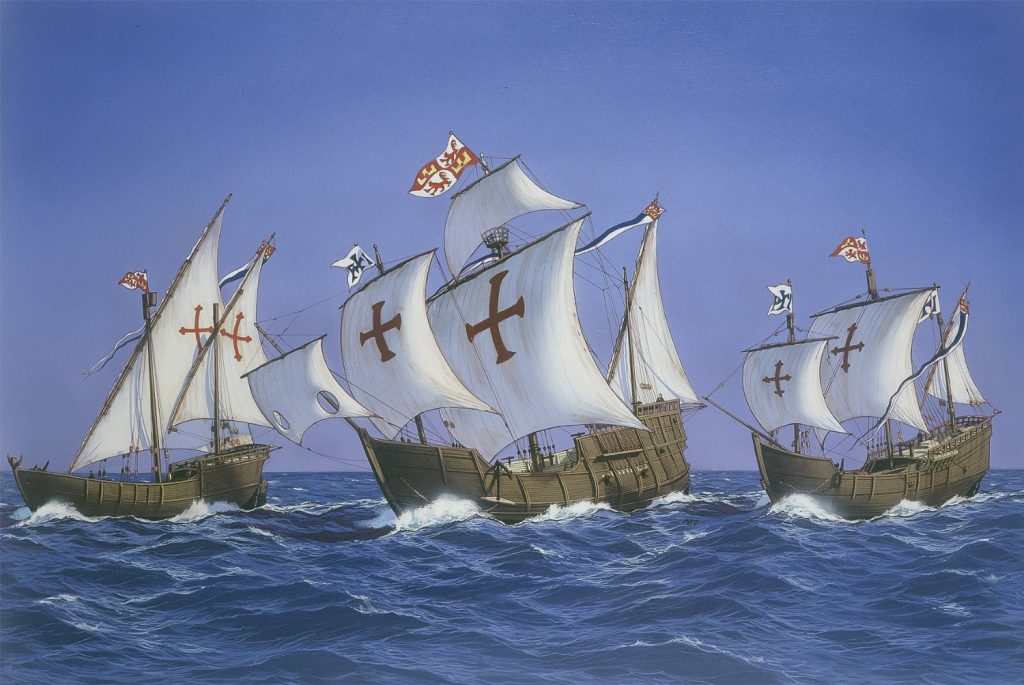Si tiene il prossimo 26 ottobre alla biblioteca Mitchell di Glasgow l’Annual Scottish Maritime History Conference. Questo il programma:
10.00am Welcome
Professor Ray Stokes (Centre for Business History in Scotland, University of Glasgow)
10.05 Session 1, Chair: Professor Stig Tenold
Dr Robb Robinson (University of Hull)
An Auxiliary Patrol Vessel in Scottish Waters: A case study of HMT Viola; and an update on its current situation and plans to ensure its preservation and return to British waters’
Professor Jari Ojala (University of Jyväskylä)
Shipbuilding and the Early Modern Finnish Economy
11.00 Coffee/Tea
11.30 Session 2, Chair: Dr Martin Bellamy
Professor Patrizia Battilani (University of Bologna)
Mass tourism and boatbuilding: the unexpected relationship
Professor Stig Tenold (Norwegian School of Economics, Bergen)
Stories from the city, no more stories from the sea: The disappearance of Norwegian seafarers in the second half of the 20th century
12:30 Lunch
A selection of maritime documents from Glasgow City Archives will be available to view during lunch
13:30 Session 3, Chair: Professor Ray Stokes
Professor John Hume
The Last Ships of UCS: A photo survey
John Messner (Glasgow Museums)
From the Clyde to Cape Fear: Captain Joannes Wyllie, Scottish Blockade Runner
Dr Jim Phillips, Prof. Jim Tomlinson & Dr Valerie Wright (University of Glasgow)
The Moral Economy of Deindustrialisation and the Fairfield Experiment
15.00 Coffee/Tea
15-30-16-30 Session 4, Chair: Professor Hugh Murphy
Dr Chris Miller (University of Glasgow)
Extraordinary Gentlemen? The Economic League in war planning and rearmament – evidence from John Brown’s shipyard, Clydebank
Dr William Knox (University of St Andrews) & Professor Alan McKInlay (Newcastle Business School)
Political Culture and Industrial Relations: the role of Communists in the UCS Work-in, 1971-72
Paper Abstracts
Dr Robb Robinson (University of Hull)
An Auxiliary Patrol Vessel in Scottish Waters: A case study of HMT Viola; and an update on its current situation and plans to ensure its preservation and return to British waters
The Viola is one of the few surviving vessels which saw action in the Great War and was involved in many engagements with German U-boats, including a couple of sinking’s.
This paper will outline Viola’s experiences, placing them in the wider context of Auxiliary Patrol actions of the Scottish Coast, a very much neglected topic; and provide an update on plans to return the vessel to Britain from its current resting place on South Georgia.
Professor Jar Ojala (University of Jyväskylä)
Shipbuilding and the early modern Finnish Economy
What was the role played by shipbuilding industry in the early modern Finnish Economy? Previous studies suggest that during the 18th Century in certain years new-build ships were the most important export items from Finland (Alanen 1957; 1964). Though these assumptions have overemphasised the role of shipbuilding (Toivanen 1983; Kaukiainen 1990;1993; Ojala 1997), this particular industry was, nevertheless, important especially during the latter part of the 18th century. Ships were built for domestic usage but also to be sold to the then capital town, Stockholm as Finland was part of Sweden until 1809. This paper is a first, tentative attempt to discuss how to calculate the role of shipbuilding in the early modern Finnish economy. The paper is part of a project to construct and analyse an aggregate growth series of the Finnish economy in the period from 1500s to 1860.
Professor Patrizia Battilani (University of Bologna)
Mass tourism and boatbuilding: the unexpected relationship
This paper explores how, from the late nineteenth to the end of the twentieth century the popular phenomenon of tourism impacted the boatbuilding industry, focusing on the most important Italian mass tourist destination, the Adriatic Coast. Over the last decades Italian boat builders have been able to find market niche and dominate them such as Italy is the top exporter in inboard boat. These enterprises are usually small or middle size, focus on style and design and often have their roots in a long lasting tradition of shipwrights dating back at least to the 19th century. Lake and port towns had always had its own craftsmen producing fishing boats or small vessels for the local market. In the last two decades of the 19th century the rise of yachting stimulated a new demand for leisure sailing boats. So the first regattas were organized as well the first yacht clubs: by the turn of the century there was 47 yacht club in Italy, most of them concentrated on the Tyrrhenian coasts and in the two port cities of Genoa and Naples. Even if it was a sport for wealthy, it contributed to increase the demand for new boats. At the turn of the century the first motor vessels were produced and motorboat clubs made their appearance. Since then motorboat racing became an important component of the demand for leisure boats.
With the exception of Venice, the Adriatic coast didn’t participate actively in this early stage of yachting. However, since the beginning of the 20th century the arrival of tourists stimulated the use of fishing vessels for leisure purposes. During the summer, fishing activities were less viable and the boats were used for a variety of other purposes. Day trips for tourists became an important source of income for the local communities and contributed to the development of boat production.
After the Second World War, mass tourism represented a great opportunity for boat producers on the Adriatic coast. “From the 1950’s and 1960’s generations of tourists have seen hundreds of boats take to the water, used both for leisure trips and for fishing”, stated Elviro Boschetti, who founded the Cantieri Navali Boschetti in Rimini, in 1959. More than ten years before, in 1947 Francesco Gori had started a small shipyard by building small sails and batanas in Cesenatico. Then in 1969 the Martini family set up the Martini Costruzioni Nautiche to produce fun boats (pedal boats, catamarans, rescue boats, sunbeds, canoes and kayaks) in Cesenatico. Many others followed in the Seventies and in the Eighties.
At present the boatbuilding district of the Adriatic coast is one of the most important in Italy. It is based on a variety of small businesses often specialized in luxury boats and some middle size enterprises as the Ferretti group that is a world top exporter of superyachts. This case study offers the opportunity to analyse the mass tourism impact on an industry that has found its key to the success in luxury boats, even if it sounds like an oxymoron.
Professor Stig Tenold (Norwegian School of Economics, Bergen)
Stories from the city, no more stories from the sea: The disappearance of Norwegian seafarers in the second half of the 20th century
Throughout the 20th century, Norway was one of the world’s leading maritime nations. This small country at times carried as much as 15 per cent of international seaborne cargoes. As manufacturing production spread, first within Europe, then to newly industrialized countries in Asia, Norwegian ships and seafarers ensured safe and efficient transport within an increasingly complex system of production. Norwegian ships and their crews played particularly important roles during the two world wars, aiding the Allied cause and ensuring the supply of vital goods.
In the first post-1945 decades, Norwegian ships were manned primarily by Norwegian crews; and seafarers were one of the most important cultural connections between Norway and more exotic parts of the world. The number of Norwegian seamen in the merchant marine peaked in the early 1960s, at more than 40,000. A combination of foreign workers, rationalisation and reductions in the size of the Norwegian fleet then led to a decline, so that by the late 1970s the number had been more than halved. In 1987 the Norwegian authorities introduced the Norwegian International Ship Register, which allowed the employment of foreign seafarers at “international” (i.e. low) wages on Norwegian-flagged ships.
Post-1945, a job at sea was the crucial link for those wanting to visit distant parts of the world. However, for most of the Norwegian seamen, this was a “gap year”-activity; an occupation during a limited time in their youth, not a career path in itself. At the same time, it was a rare opportunity for cultural exchange and knowledge about other parts of the world, in the days before cheap mass travel. As late as in the early 1970s it was estimated that around 30 per cent of the male labour force in Norway had been at sea for shorter or longer periods. Today this proportion has been drastically reduced – Norwegians own the ships, but leave the hard labour to others.
The aim of this paper is to present the framework governing the employment of seafarers on Norwegian ships in the second half of the 20th century, and then to discuss the causes and effects of the changes in Norwegian seafaring, with a particular emphasis on the cultural element. The paper is based on a combination of archival material, secondary sources and interviews with seafarers from the Norwegian city of Bergen. Employment on a merchant ship was a “window to the world” for Norwegian men (and some women). Why and how was this window closed?
Professor John Hume
The Last Ships of UCS: A photo survey
When Upper Clyde Shipbuilders (UCS) went into liquidation, and while the archives of the company and its predecessors were being listed for preservation, the liquidator, Robert Courtney Smith (now Sir Robert), allowed me to take numerous photographs in the Clydebank and Scotstoun yards. These included the launches of the last ships to be built in these yards by UCS. In this presentation I will show photographs taken on these occasions, with a commentary on what is depicted.
John Messner (Glasgow Museums)
From the Clyde to Cape Fear: Captain Joannes Wyllie, Scottish Blockade Runner
Glasgow Museums has an oil painting of the Advance, a Clydebuilt paddle steamer and one of the most successful blockade runners employed by the Confederacy during the American Civil War. On the painting’s original plaque was listed its former owner and steamer’s commander, Joannes Wyllie. Yet almost nothing was known about the man. Where did he come from? How did he find his way onto a steamer owned by the state of North Carolina and what exactly did he do on the Advance? The official histories give the briefest of mentions to Wyllie as either sailing master or member of the crew, but after detailed research it can now be said that he is one of the most successful of all Scots mariners who served as a runner. Indeed, it can be argued he is one of the most successful of all captains of the conflict. Yet his name is all but forgotten.
This paper will give an overview of Wyllie’s career at sea, starting on a voyage from Glasgow to Bombay as an apprentice in 1852 and ending as commander of a prize blockade runner. This took him around the world, surviving shark attacks, poisonings, hurricanes in the North Atlantic and the guns of Federal blockade warships.
Extensive research from archives on both sides of the Atlantic has shed a completely new light on this forgotten Scot, with his story soon to be told to a wider audience which will challenge all existing histories of the steamer Advance.
Dr Jim Phillips, Prof. Jim Tomlinson & Dr Valerie Wright (University of Glasgow)
The Moral Economy of Deindustrialisation and the Fairfield Experiment
The authors are using a case study approach to examine the phased process of deindustrialisation in Scotland after the peak of employment in the late 1950s in coal, shipbuilding, steel, railways and textiles. A re-examination of the 1965-67 Fairfield Experiment tests the hypothesis that moral economy considerations shaped the process of deindustrialisation, at least until the 1980s. UK government support for the Fairfield shipyard in Govan in 1965 was predicated on substantial changes to production methods and business organization, with emphasis on work study and industrial partnership. In this respect the Experiment encouraged moral economy expectations on the Clyde: Fairfield workers believed they had a future in shipbuilding, which they invested in by accepting changes to the design, execution and reward of their labour. But the Experiment was part of a broader government strategy that also challenged these expectations, and arguably discounted the future of shipbuilding on the Clyde. This emphasised growth, competition and industrial diversification, and duly necessitated further movement of capital and labour from the staple industries to higher added value manufacturing.
Research is being conducted by the authors with the support of a substantial grant from the Leverhulme Trust. The analysis is based on integrating the arguments and findings of established papers and books with perspectives drawn from the Fairfield papers in the Mitchell Library, Upper Clyde Shipbuilders papers in the University of Glasgow archives, and UK government papers in the National Records of Scotland and The National Archives, Kew.
Dr Chris Miller (University of Glasgow)
Extraordinary Gentlemen? The Economic League in war planning and rearmament – evidence from John Brown’s shipyard, Clydebank
For an organisation active for three-quarters of the twentieth century and heavily backed by some of Britain’s largest companies, it is astonishing how little is known about the Economic League. Founded after the First World War by well-known and influential individuals from the upper echelons of Business to ‘disseminate economic knowledge [and] put forward the case for capitalism amongst the working class’, ephemera produced by the League, especially for the period between the world wars, was circulated by the million and still survives in significant quantities. However, the totality of published academic historical research into its activities extends to just one article and one (self-published) book, by Arthur McIvor in 1989 and Mike Hughes in 1994, respectively. Never at any point willing to divulge past secrets, the League denied McIvor access to its archives while Hughes based his work on a handful of published sources. Late 1980s and early 1990s investigative journalism by Paul Foot and others into the League’s systematic blacklisting of workers brought about its collapse in 1993, and with it – it appears – the deliberate destruction of its records. Thus, until now, Hughes’ work marked the end of research into its activities.
This paper has two goals. Firstly, it attempts to answer some of the unknown questions about the League’s membership and finance. The second is to understand the League’s ‘power’ by viewing it through a different lens, not only as a shadowy organisation whose dubious activities warrant highlighting, but as an organisation with aims and objectives like any other, which took decisions that can be evaluated and whose success one can attempt to measure. To achieve this, the years of initial defence planning and subsequent arms expenditure programme from c.1932 to 1940 are re-examined from an employer, rather than employee, perspective, drawing on previously unused material from the Scottish Business Archives at the University of Glasgow – and particularly that of the John Brown and Company collection.
Dr William Knox (University of St Andrews) & Professor Alan McKInlay (Newcastle Business School)
Political Culture and Industrial Relations: the role of Communists in the UCS Work-in, 1971-72
This paper examines the role of members of the Communist Party of Great Britain as shop stewards in the UCS work-in of 1971-2 arguing that while their leadership was crucial to the success of the action it was as trade unionists rather than as political actors. The paper argues that they went to enormous lengths to keep the party leaders from interfering in the dispute ensuring that they were never seen as anything other than inseparable from the workforce. The communists in the UCS leadership never met as a separate caucus and were careful to avoid using the term ‘comrades’ at any meeting. This was a political master-stroke by the stewards; but in many ways it depoliticised the action side-lining into moderate demands for the right to work and opposition to the Heath government. Indeed, the paper argues that in spite of the heroic nature of the work-in communists made little political gains in the long run. Even the much vaunted solidarity of the work-in was endangered by inter-party squabbling in which craft mentalities threatened to overwhelm class allegiances.


